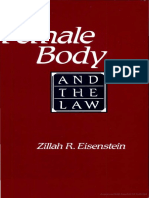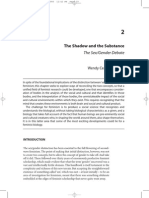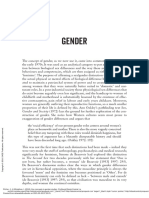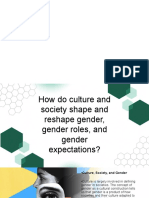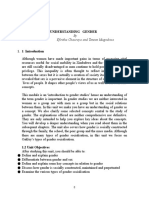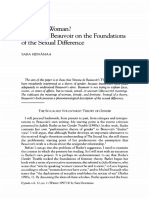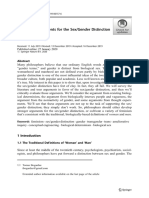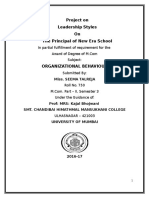0% found this document useful (0 votes)
8 views2 pagesSex Equality
The document discusses the complexities of sex equality, emphasizing the need to recognize the specificity of the female body rather than equating women's treatment to that of men. It critiques the dominant discourses that view the female body in relation to the male body, particularly in the context of pregnancy, and argues for a reconceptualization of equality that acknowledges diversity rather than imposing a homogeneous standard. The author highlights the interconnectedness of sex and gender, asserting that recognizing differences should not lead to a reductionist view that privileges biological definitions over cultural interpretations.
Uploaded by
kate.mossCopyright
© © All Rights Reserved
We take content rights seriously. If you suspect this is your content, claim it here.
Available Formats
Download as DOCX, PDF, TXT or read online on Scribd
0% found this document useful (0 votes)
8 views2 pagesSex Equality
The document discusses the complexities of sex equality, emphasizing the need to recognize the specificity of the female body rather than equating women's treatment to that of men. It critiques the dominant discourses that view the female body in relation to the male body, particularly in the context of pregnancy, and argues for a reconceptualization of equality that acknowledges diversity rather than imposing a homogeneous standard. The author highlights the interconnectedness of sex and gender, asserting that recognizing differences should not lead to a reductionist view that privileges biological definitions over cultural interpretations.
Uploaded by
kate.mossCopyright
© © All Rights Reserved
We take content rights seriously. If you suspect this is your content, claim it here.
Available Formats
Download as DOCX, PDF, TXT or read online on Scribd
/ 2
